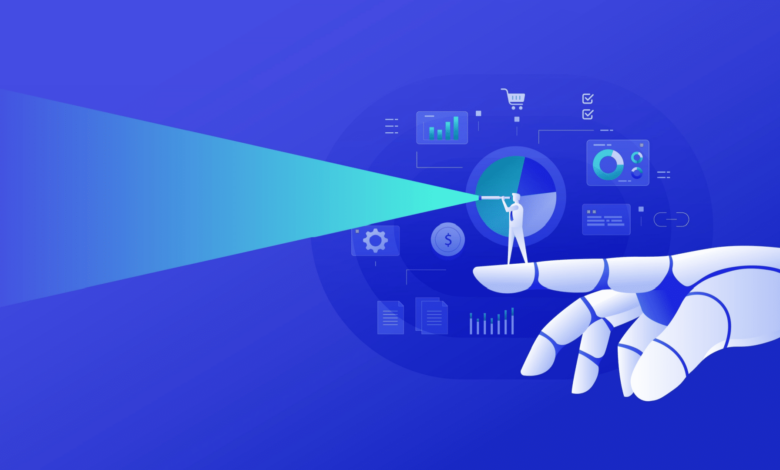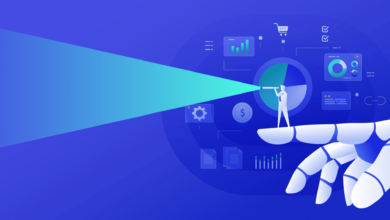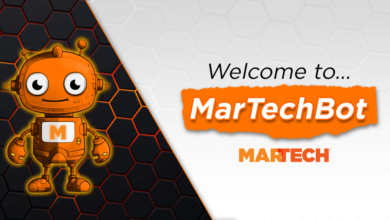How to reframe AI adoption to focus on outcomes rather than tools

“How do we use AI to improve marketing performance?” »
Marketers dread this question even as executives ask it more and more often. This makes them anxious and defensive because they lack a clear story about their team’s martech maturity. They also struggle to explain the true benefits of AI. Indeed, it is not easy to measure the use of AI and its impact on results.
However, these tough questions present an opportunity to demonstrate the true impact of AI on customer engagement and marketing results.
Dig Deeper: How Marketers Can Move Beyond Random Acts of AI and Why They Should
Ultimately, using AI or any other martech tool is not about producing more content but about producing better content. This content connects with your audience. It responds quickly to their concerns and helps customers find the products and solutions they need. These results have long been the hallmark of good marketing.
Instead of focusing on tools, marketers should talk about how AI drives results and improves customer experience. To do this, you need to assess the role of AI in your martech stack. This means understanding where it is already having an impact and identifying opportunities for improvement.
Dig Deeper: AI Readiness Checklist: 7 Key Steps for Successful Onboarding
Understanding the current role of AI in martech
Start by assessing whether including AI in marketing changes the martech stack. Many marketers still use the same tools, but with capabilities now powered by AI for increased speed and personalization. Each vendor is eager to remind us how AI has long been a part of how they solve our marketing challenges. Find out where and how AI is already contributing to your martech stack.
This helps you craft your “AI impact story,” a narrative highlighting how AI improves marketing performance and conversions. Like all marketing reporting, it must focus on customer needs and motivations. Structure your story around three key benefits:
New abilities. New customer engagement. New team opportunities.
AI-Driven Capabilities: Expanding What’s Possible
AI has been integrated into martech for decades in email, search, and web analytics tools. It handles most of the personalization, scoring, and segmentation features of marketing automation, email marketing, CRM, social media, and SEO systems.
What new capabilities does your technology offer, based on AI and other data solutions? Ask yourself:
Are you able to score your prospects more efficiently or thoroughly? Do you have access to multiple data sources across multiple platforms or systems? Can you now produce personalized content on the website or landing page based on first-party data? How often is your chatbot used, and how often does that path lead to product page visits, sales demos, or downloads? Do AI-powered algorithms predict future behaviors, populate your content map with new ideas, or analyze social sentiment? Are you using behavioral data at early stages (intent and consideration) to personalize experiences at later stages (decision and loyalty)? What have you learned from large-scale A/B testing?
Use historical performance data to map this in terms of results across the customer lifecycle and show incremental improvement over previous years. Cross-platform integration can also provide incremental improvement in conversion and engagement metrics.
This is how you tell the story of how your marketing benefits from AI without being distracted from the core business of marketing: creating great customer insights and experiences.
Improving customer engagement with AI
Engagement is measured at the content level: how well did each segment or persona respond to each piece of content? Marketers are adopting genAI to accelerate content creation and production, almost to the point of overflowing. Unfortunately, there is too much generic and bland content. I hope you’ve moved from the quantity of range game to the quality of resonance game.
We are under pressure to use generative AI at every stage of production. This includes ideation and content creation down to video, image generation and even avatars. Executives may appreciate how genAI accelerates work. Remind them, however, that human creativity is necessary to develop customer-centric, data-driven strategies. Human connection is what makes campaigns resonate and drive action – something genAI alone cannot achieve authentically or confidently.
That said, genAI is a powerful tool for improving engagement when paired with a smart strategy. It can streamline the creation of personalized assets for various personas and enable real-time personalization, making experiences and advertising more impactful.
Ideally, you can show (using AI-powered analytics tools) that different segments have different response rates and engage at higher levels with personalized content. Not all segments have the same purchasing frequency or spending. That doesn’t mean that low-spending segments aren’t an important part of the mix, especially if you can convert more of them using personalized content.
Incremental growth drives marketing effectiveness and should be central to the AI impact story. Measure this increase through productivity, performance and quality metrics, such as:
Time saved. Increased yield (for example, creating five variations of an asset for testing). Reduced costs (e.g. simple creation of images or videos in-house). Consistency in tone, style and message.
Providing marketing teams with AI opportunities
Consider how AI creates opportunities for development, skill growth, and satisfaction for your team. Most of us love learning about AI and its influence, but we also don’t have much time for formal training.
As a marketing trainer, I found that people wanted quick, actionable training in a snack format. This is especially true when it helps them use tools and platforms more effectively. Fast writing and using AI for data analysis and richer personalization are still popular topics. Focus on areas where AI can improve human creativity and productivity.
In addition to learning, AI-powered productivity and training tools can add hours to everyone’s day. I love using AI meeting summaries. This frees up the person taking notes so they can focus on the issues being discussed. Plus, they don’t have to spend an hour summarizing and organizing the meeting.
AI assistants allow project managers to focus on strategic decisions and determine next steps.
Integrate AI into executive conversations
Marketers are increasingly using AI. They use genAI directly and rely on AI tools for data analysis and content personalization. Gartner research consistently shows that marketers are increasingly adopting AI.
Instead of fearing the question of how AI helps us communicate with customers, embrace it and make it part of your executive reporting narrative. Bringing AI into the open and integrating it into your current metrics and reporting makes it less intimidating while demonstrating your commitment to staying ahead of the curve in martech.
Dig Deeper: 5 ways to boost AI adoption
Contributing authors are invited to create content for MarTech and are chosen for their expertise and contribution to the martech community. Our contributors work under the supervision of the writing and contributions are checked for quality and relevance to our readers. The opinions they express are their own.



